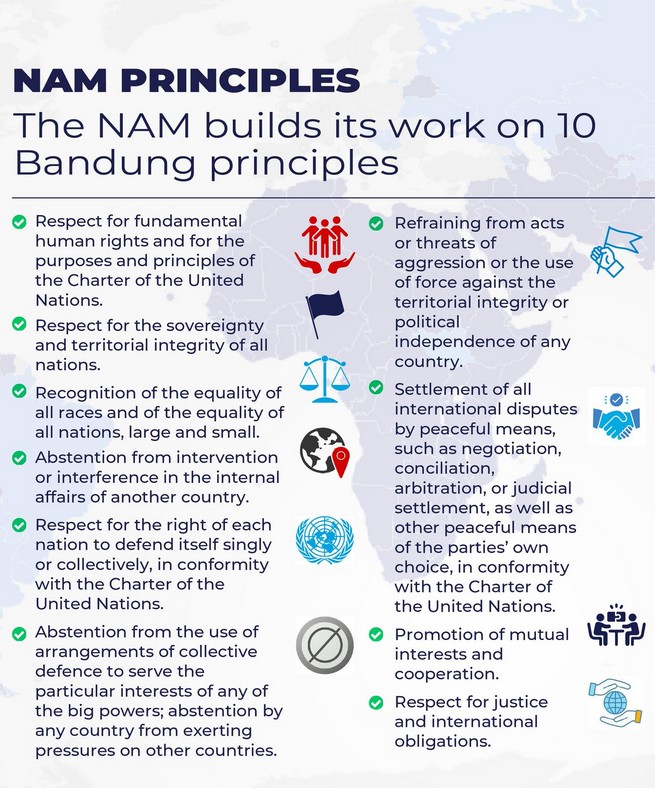Why in the News?
The 19th Non-Aligned Movement (NAM) Mid-Term Ministerial Meeting was recently held in Kampala, Uganda.
About the Non-Aligned Movement (NAM)
- Overview: A grouping of states not formally aligned with or against any major power bloc, established to uphold sovereignty, independence, and neutrality during the Cold War.
- Formation: Founded in 1961 at Belgrade, Yugoslavia, emerging from the 1955 Bandung Conference (Indonesia) which laid down the Ten Principles of Bandung as its ideological foundation.
- Founding Leaders:
-
- Jawaharlal Nehru (India)
- Gamal Abdel Nasser (Egypt)
- Josip Broz Tito (Yugoslavia)
- Ahmed Sukarno (Indonesia)
- Kwame Nkrumah (Ghana)
- Membership:
- 120 countries: 53 from Africa, 39 from Asia, 26 from Latin America & the Caribbean, and 2 from Europe.
- Includes Palestine as a member and 17 observer nations with 10 observer organisations.
- Represents nearly 60% of UN membership, making it the second-largest intergovernmental bloc after the UN.
- Structure: NAM functions without a permanent secretariat, charter, or budget, relying on rotational leadership and consensus-driven decision-making.

India’s Contemporary Role in NAM:
- India advocates for reinvigorating NAM as a platform for South-South cooperation in technology, trade, and climate resilience.
- It seeks to make NAM relevant in a multipolar world, focusing on digital equity, global governance reforms, and sustainable development.
- India views NAM not as an anti-West bloc but as a forum of balanced autonomy, promoting strategic non-alignment and global partnership in the 21st century.
| [UPSC 2009] Among the following Presidents of India, who was also the Secretary General of Non-Aligned Movement for some period ?
Options: (a) Dr. Sarvepalli Radhakrishnan (b) Varahairi Venkatagiri (c) Giani Zail Singh * (d) Dr. Shanker Dayal Sharma |
Get an IAS/IPS ranker as your 1: 1 personal mentor for UPSC 2024

